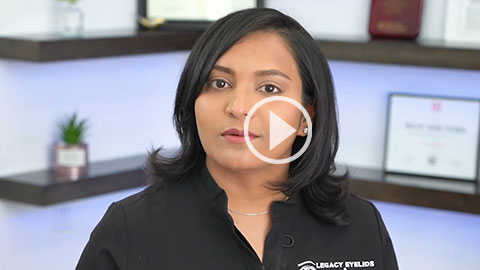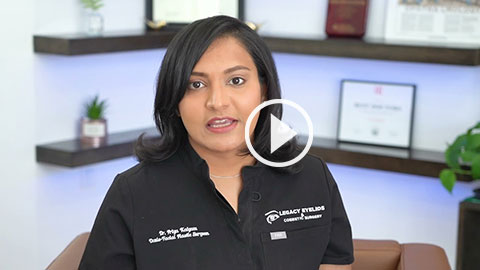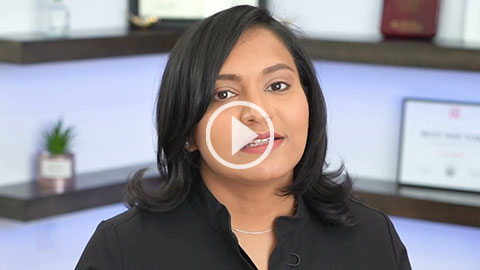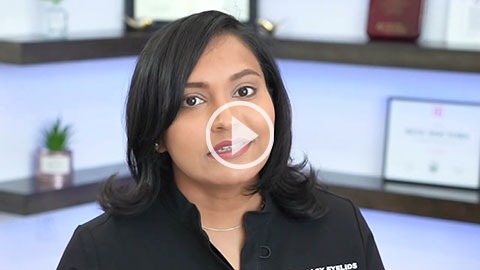Eyelid Surgery Frequently Asked Questions
Top Eyelid Surgery Center in Texas
What is blepharoplasty?
Generically, blepharoplasty refers to any operation that changes the form or function of the eyelid. Patients and surgeons most commonly look at blepharoplasty as a procedure performed on the upper or lower eyelid to remove redundant tissue such as bulging fat or overhanging skin to cosmetically reshape the eyelid.
Will eyelid surgery rid me of my eye wrinkles?
In the upper eyelid a significant roll of redundant overhanging skin is often excised. Much greater caution is taken in the lower eyelid, where techniques such as laser skin resurfacing are used to reduce the prominence of the lower eyelid wrinkles. Most wrinkles in the eyelid area have a prominent dynamic component related to underlying muscle function. This element is often best treated with Botox.
What should I expect postoperatively?
Postoperative discomfort is generally mild. Significant swelling and bruising is common in the first week postoperatively. Swelling is greater when upper and lower eyelid surgery is performed simultaneously. Most patient’s vision is fine for ordinary activities within 48 hours postoperatively. If lower lid surgery is performed with fractional CO2 laser resurfacing of the lower eyelid skin to tighten and smooth the eyelid skin, the skin surface must heal over the first week, and will remain slightly pink for some weeks postoperatively. Women wearing makeup can generally resume full use 10-12 days after surgery.
When will I be able to see the final results?
As soon as the swelling is reduced to a moderate degree surgical results can be seen. Results are often not “final” for a month or more postoperatively. Like most surgery, small amounts of swelling and incisional healing may obscure the absolute “final” result slightly for 2-3 months postoperatively.
Traditional Blepharoplasty VS. Laser Blepharoplasty for Eye Bags?
Traditional incisional surgery produces powerful changes in the amounts and position of skin, muscle and fat in the eyelids. Many of these procedures are performed in-office, and I use a CO2 laser for most of the cutting in these cases, as it is a beautifully precise tool that minimizes bleeding and bruising and works fairly painlessly. CO2 and Erbium-YAG lasers are also used for laser skin resurfacing, and in certain situations can both tighten skin and even eliminate secondary lower eyelid bags or festoons that can overlay the cheek in certain patients.




